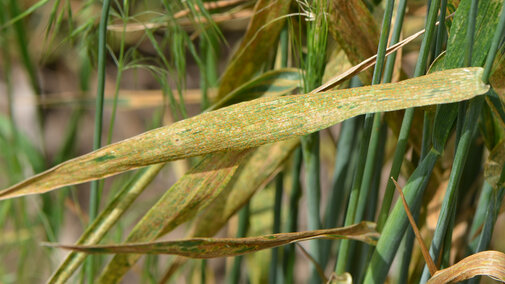Stripe rust (Figure 1) has significantly increased in all wheat-growing areas in Nebraska. It is recommended that wheat be treated with a fungicide to protect the flag leaf. If the incidence (percentage of flag leaves diseased) or severity (percentage of the flag leaf area diseased) is less than 50%, spraying a fungicide will significantly reduce yield loss due to stripe rust.
For wheat that is fully headed or flowering, apply a triazole fungicide (a fungicide whose active ingredient ends in “…conazole” in Table 1, compiled by the North Central Regional Committee on Management of Small Grain Diseases (NCERA-184). If wheat is not headed or is just beginning to head, apply any fungicide labeled for rust control on wheat (Table 1).
Applying a generic fungicide will save you some money. Generic Folicur (active ingredient: tebuconazole) is recommended as it has excellent efficacy on rust diseases and fair efficacy on Fusarium head blight.
In high risk areas for Fusarium head blight (eastern and southern Nebraska), Caramba or Prosaro is recommended for control of stripe rust and suppression of Fusarium head blight.
It is too late to spray wheat fields that are well past the flowering growth stage or those where flag leaves are already heavily infected by stripe rust, such as the one shown in Figure 1.
Although warmer daytime temperatures (greater than 75oF) can slow stripe rust development, cool nighttime temperatures coupled with dew formation and intermittent rain are favorable for development and spread of stripe rust. Therefore, do not rely on warmer temperatures alone to slow stripe rust. It is recommended that wheat be treated with a fungicide to protect the flag leaf.

